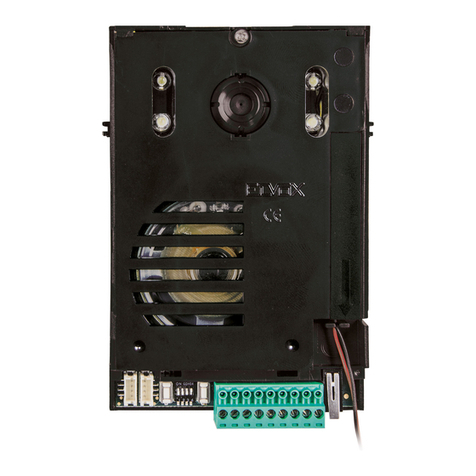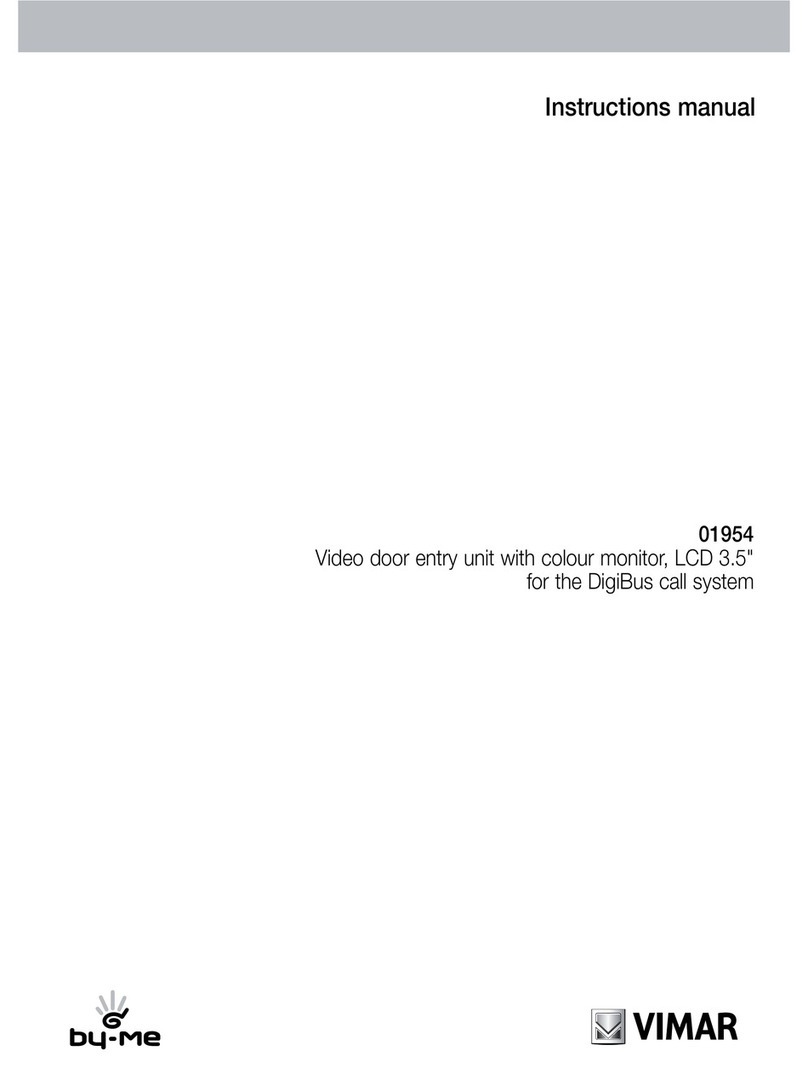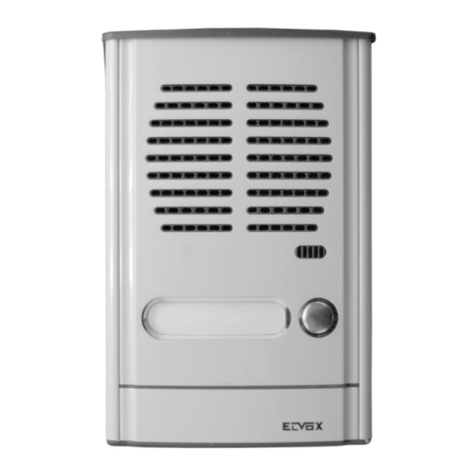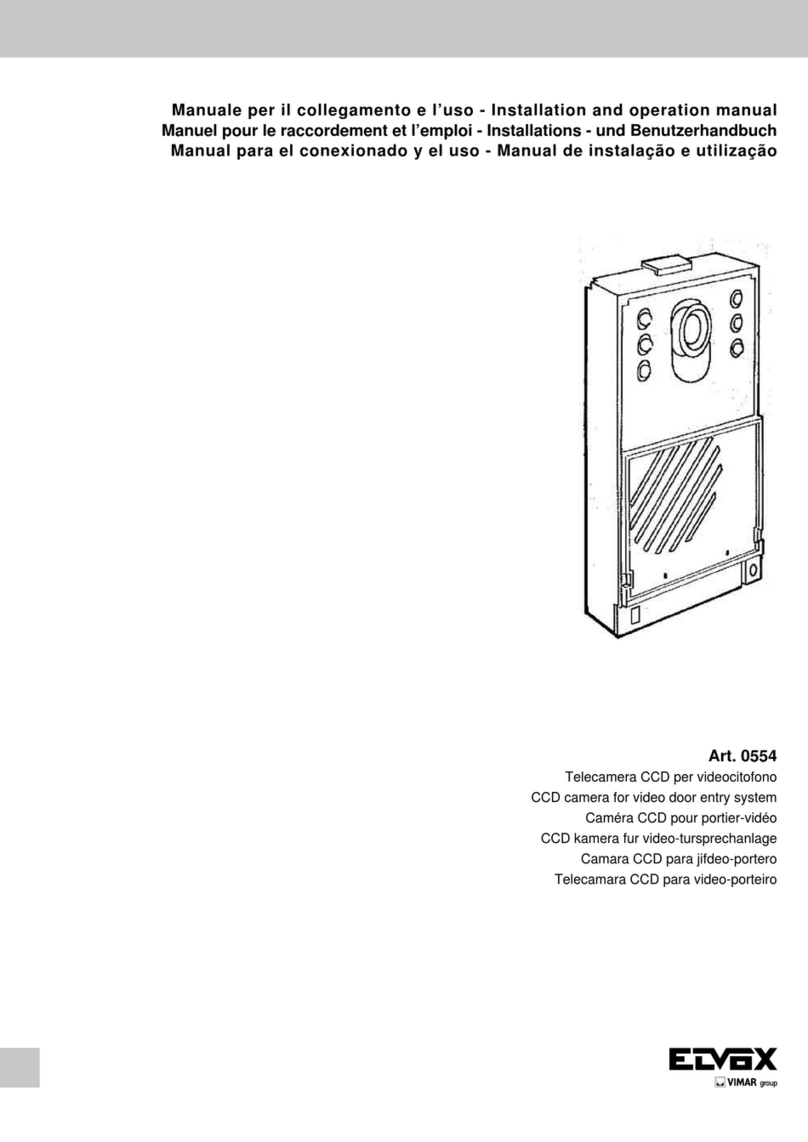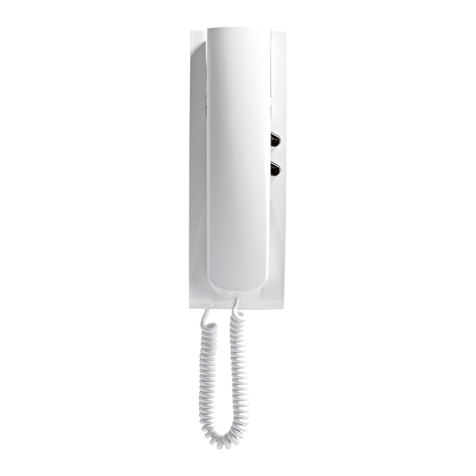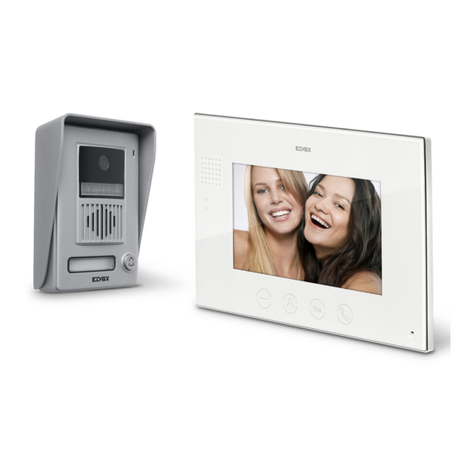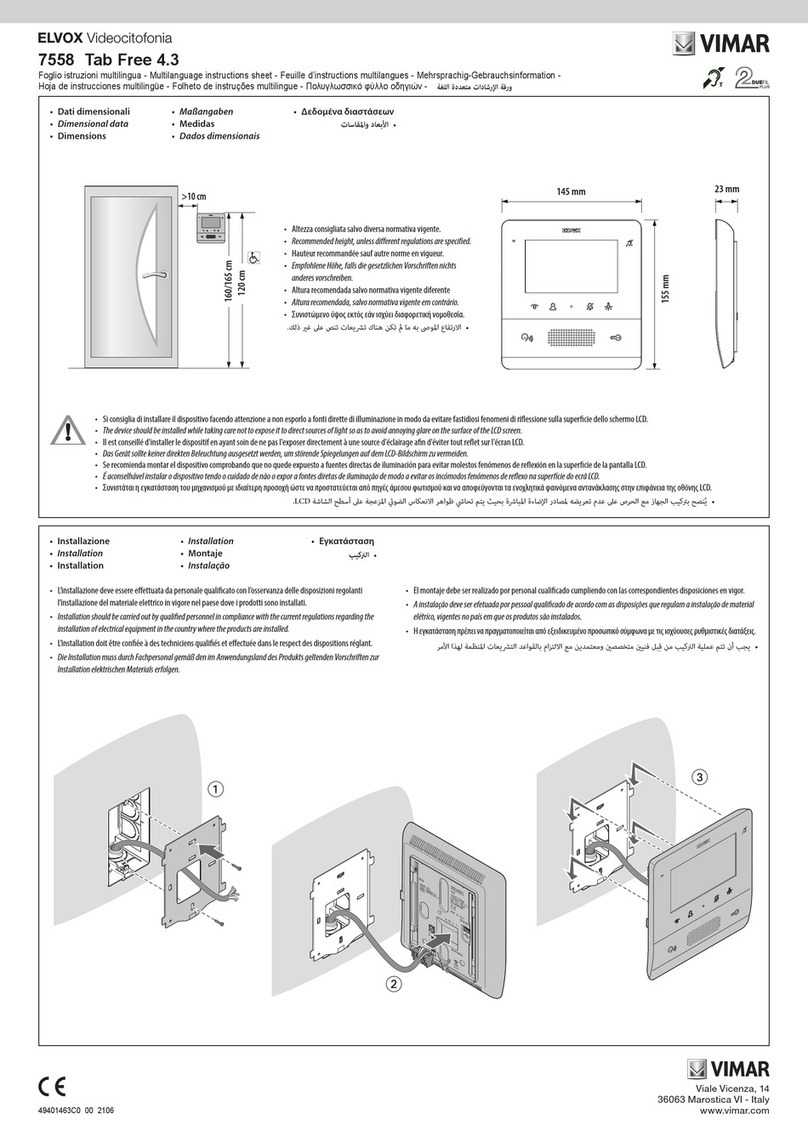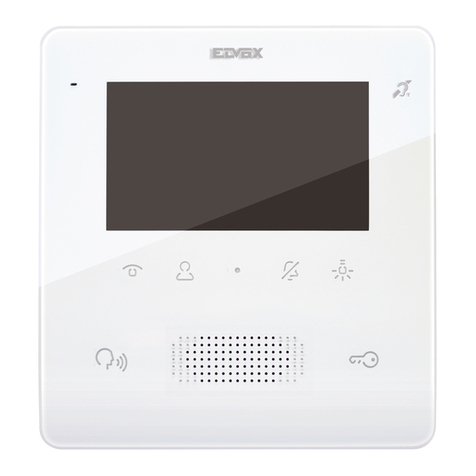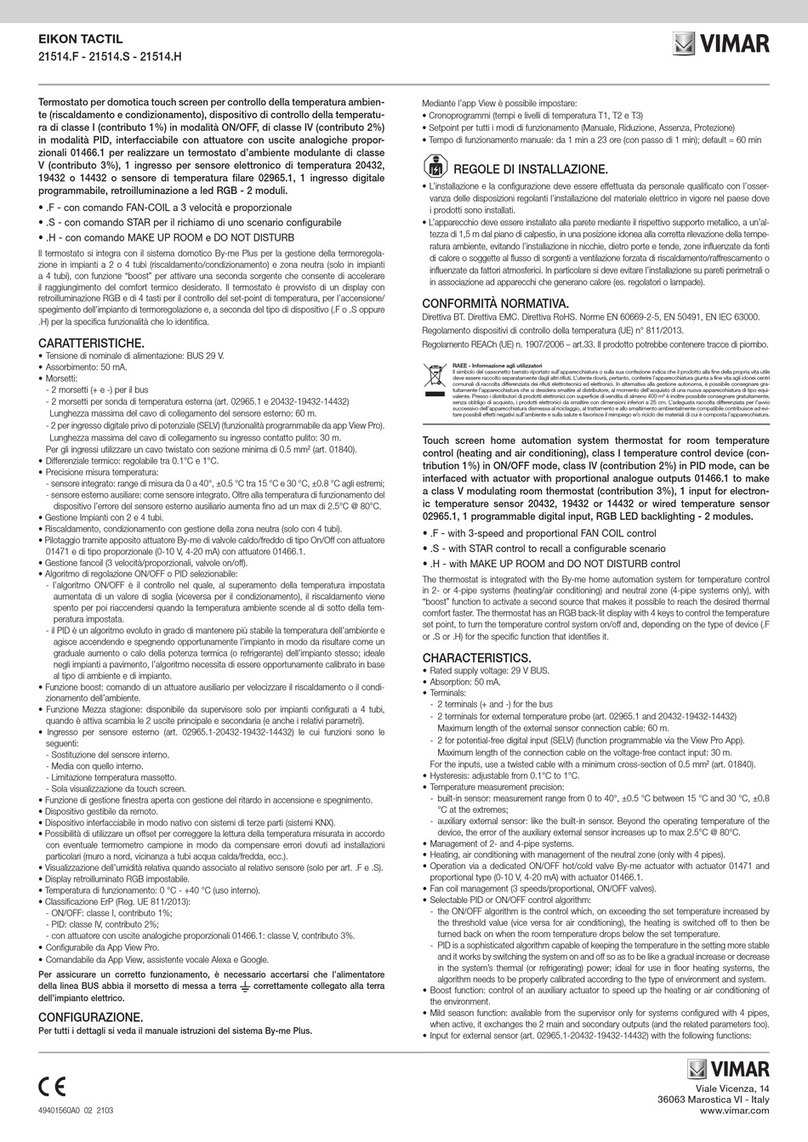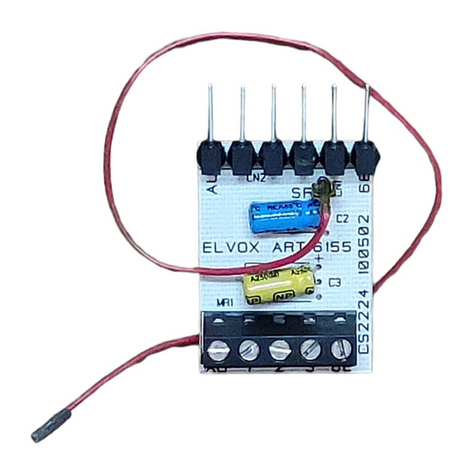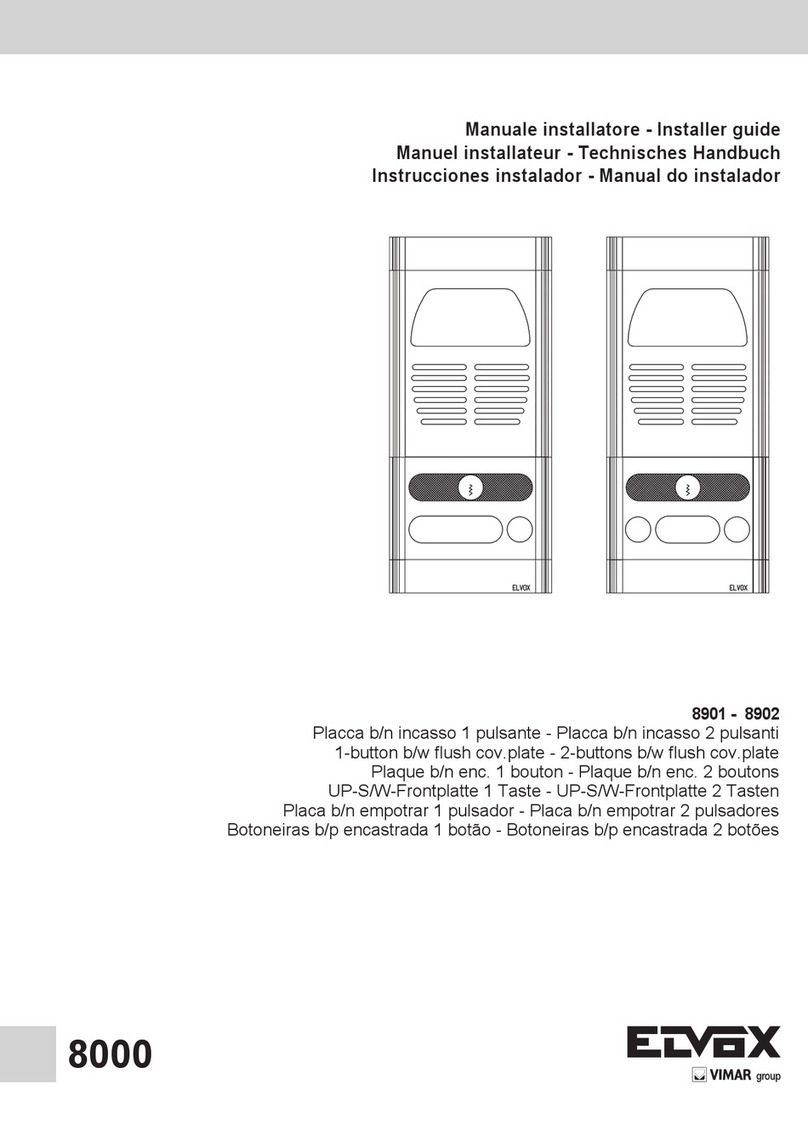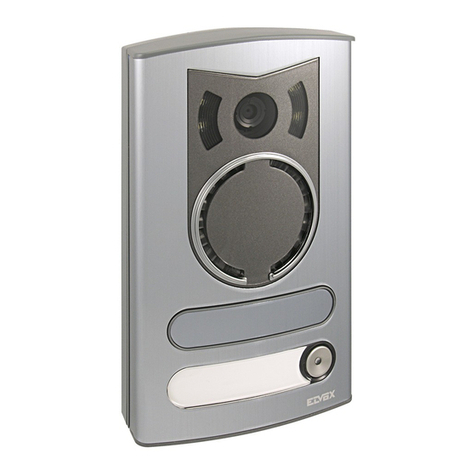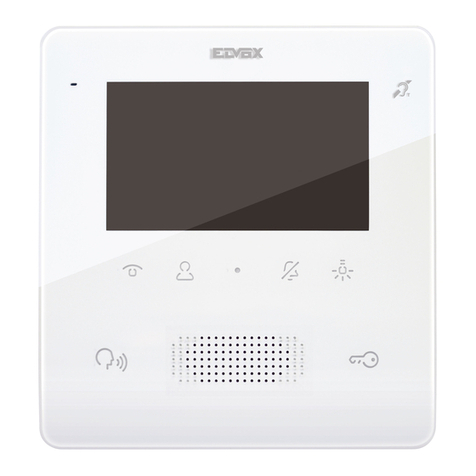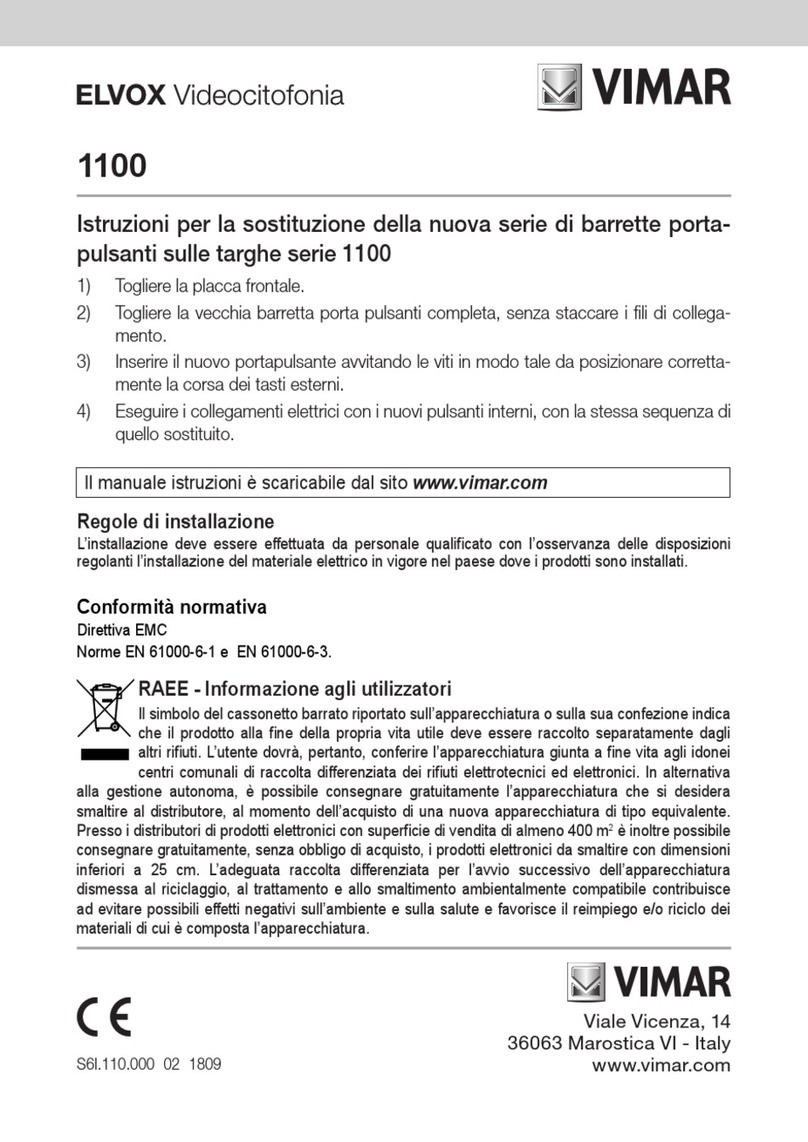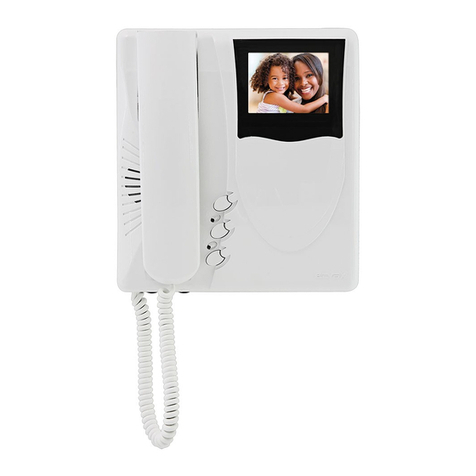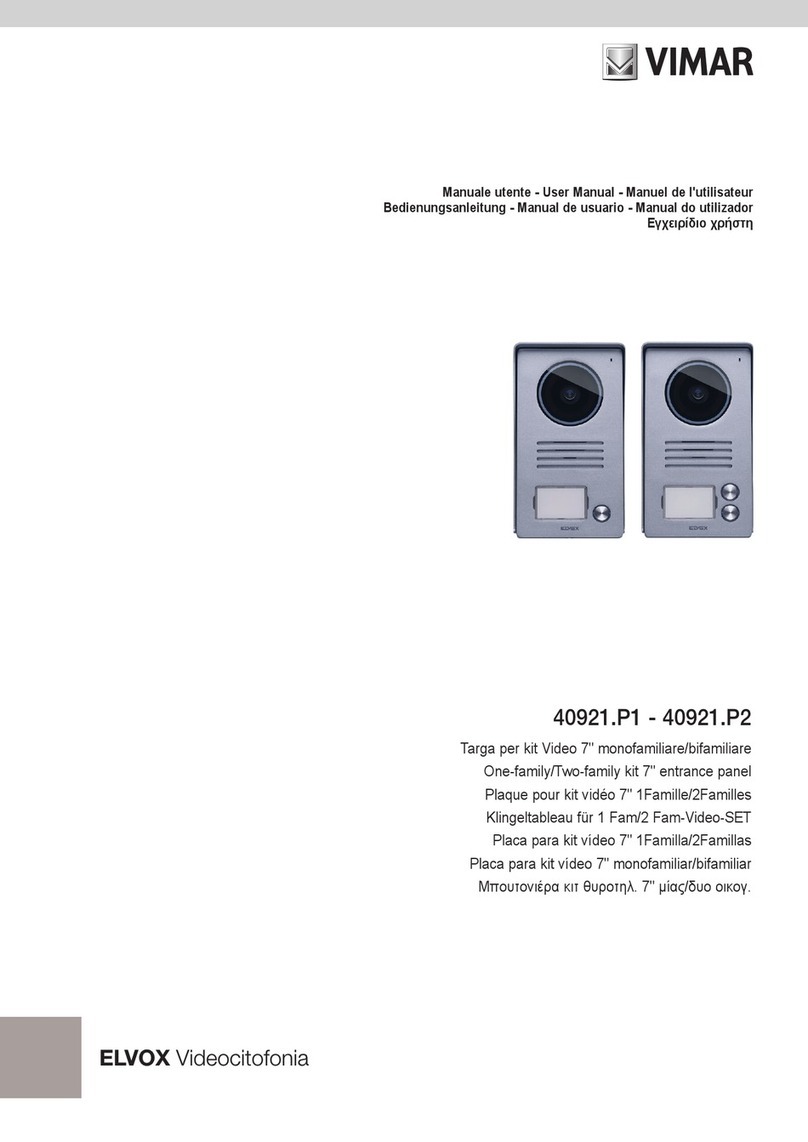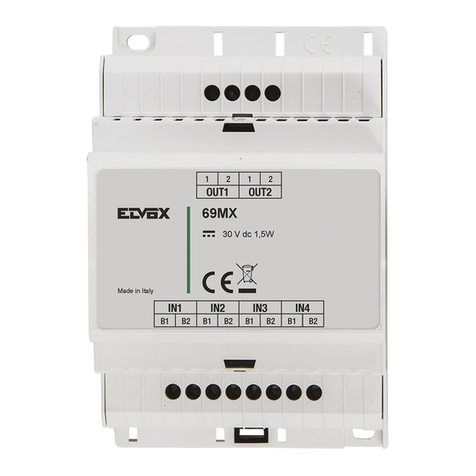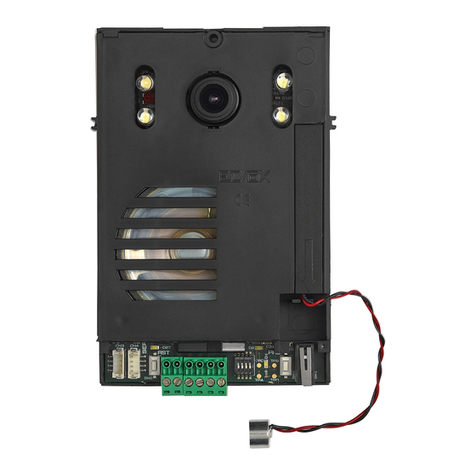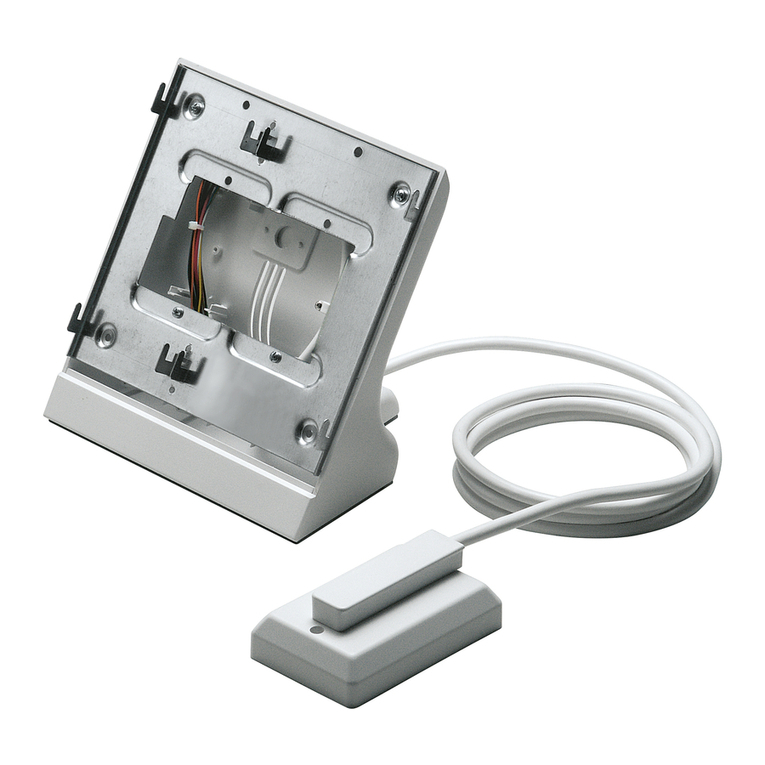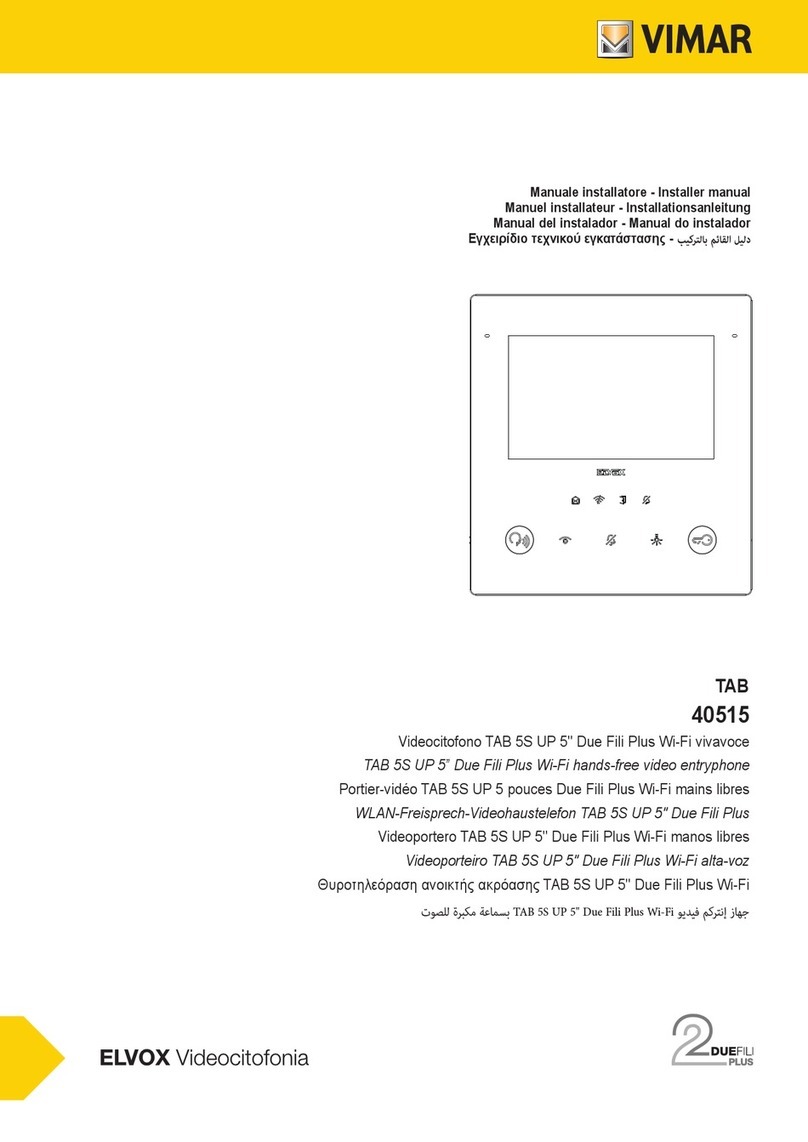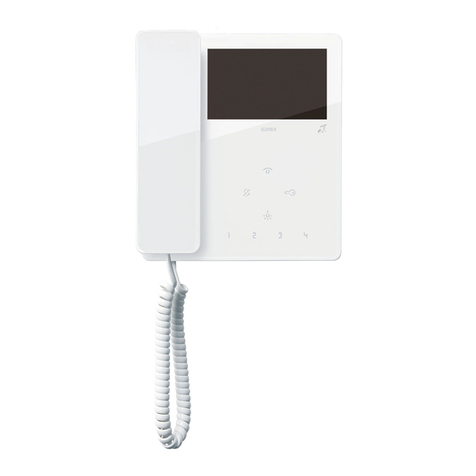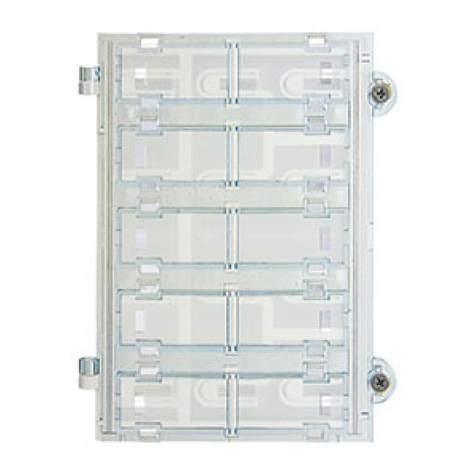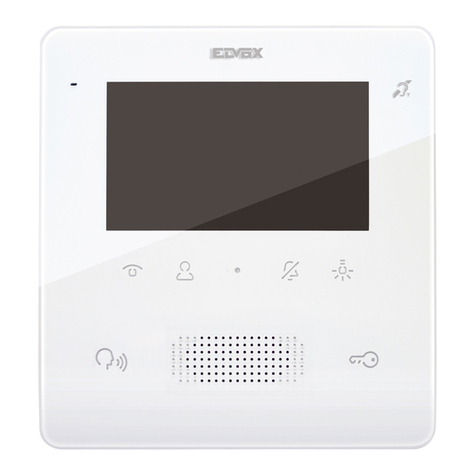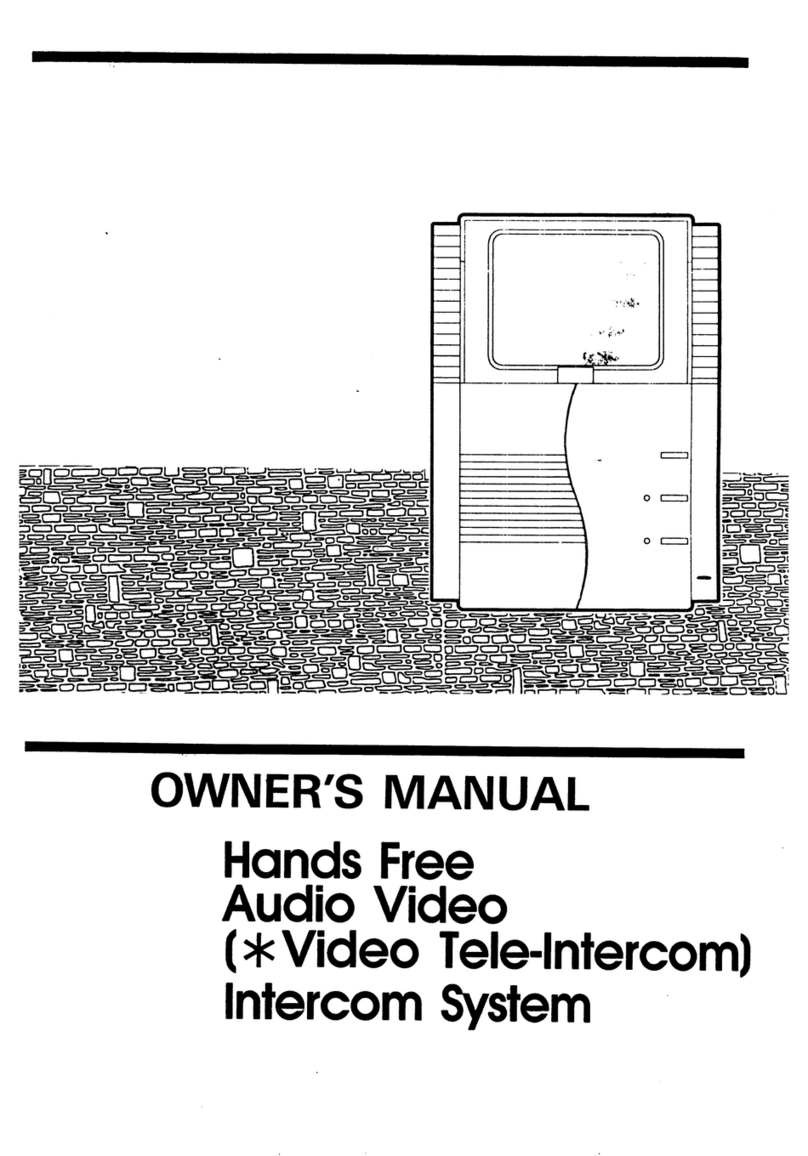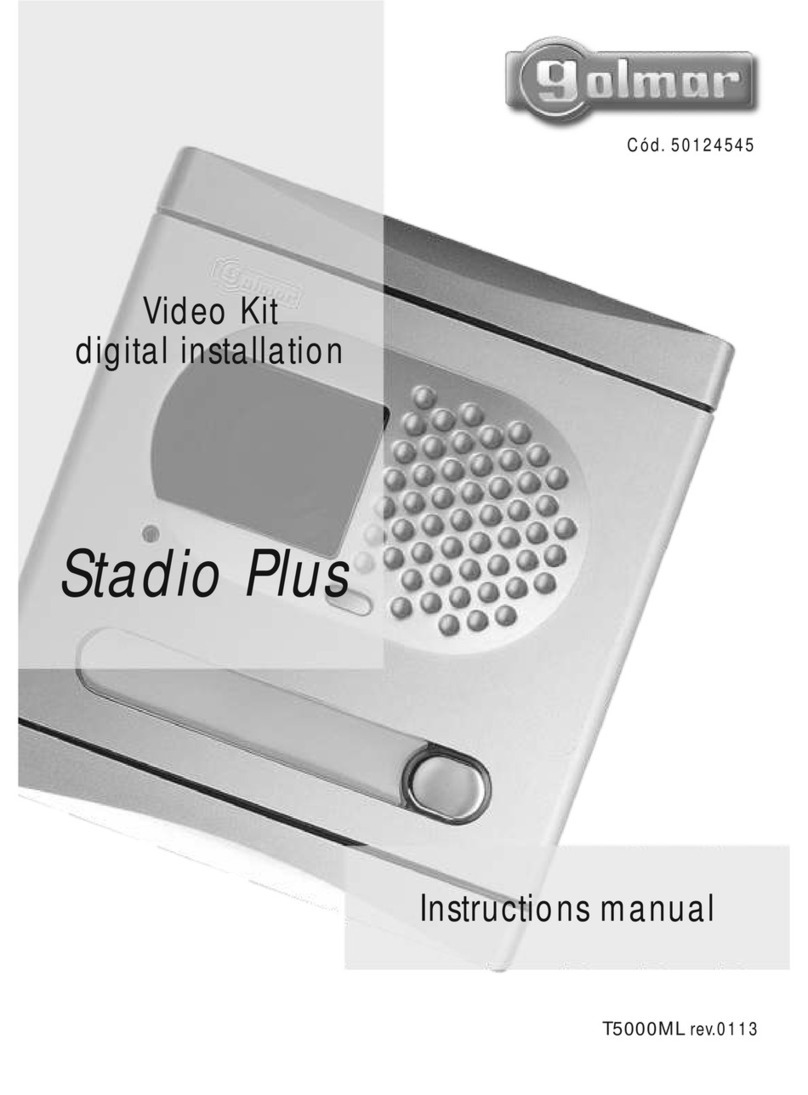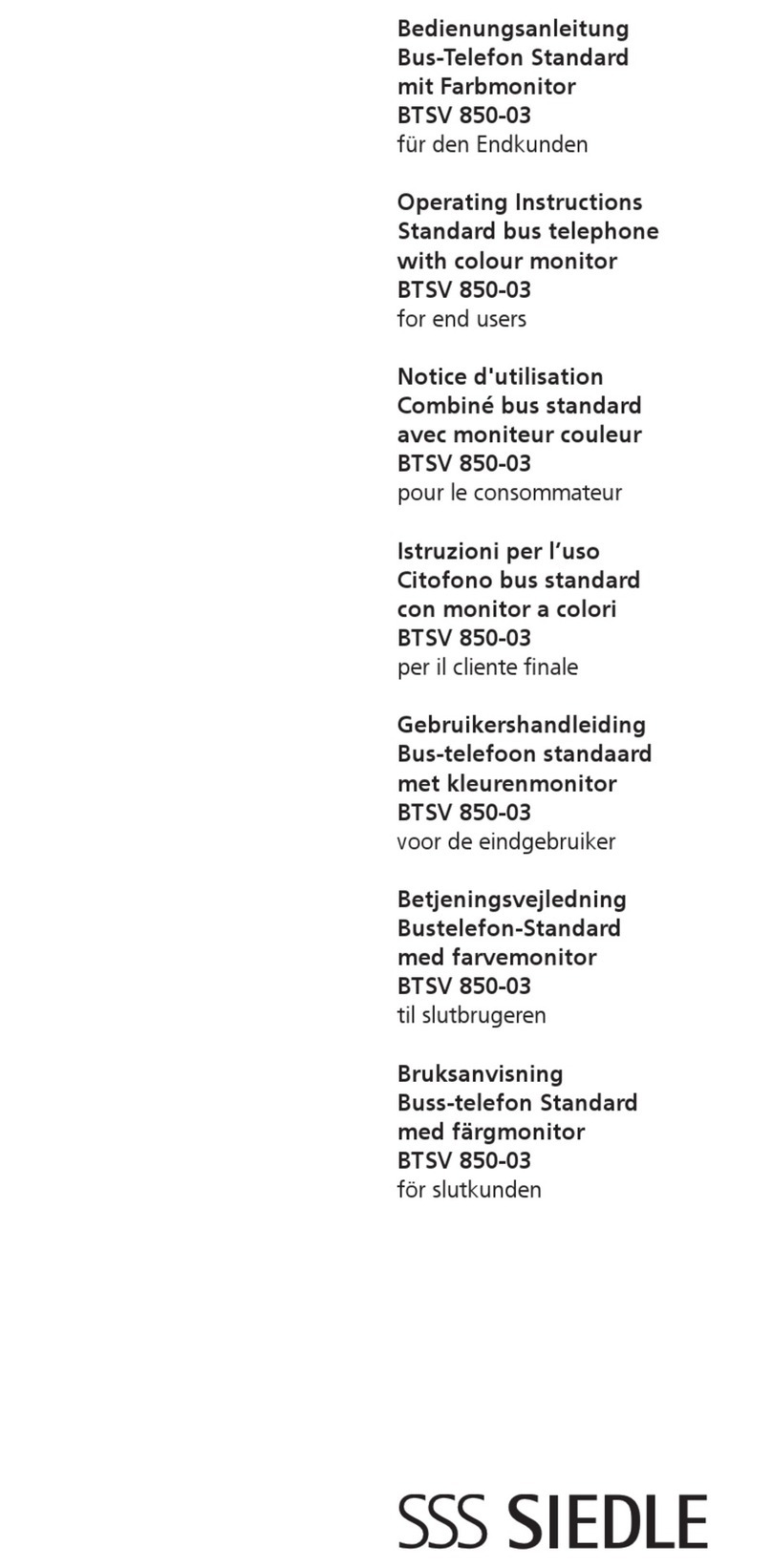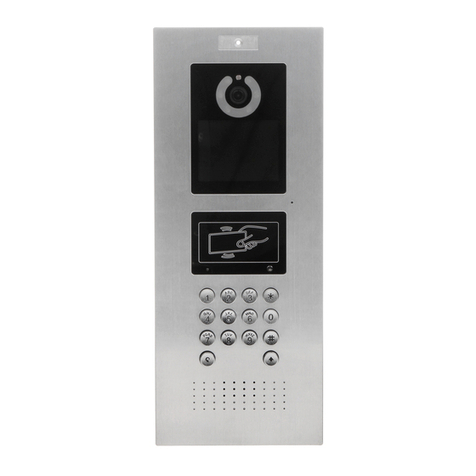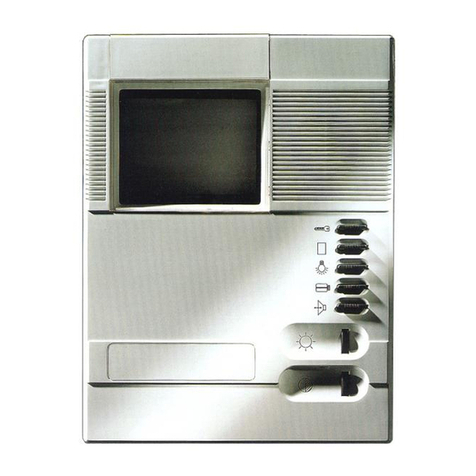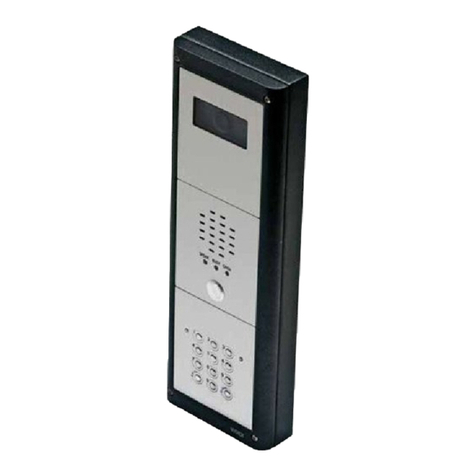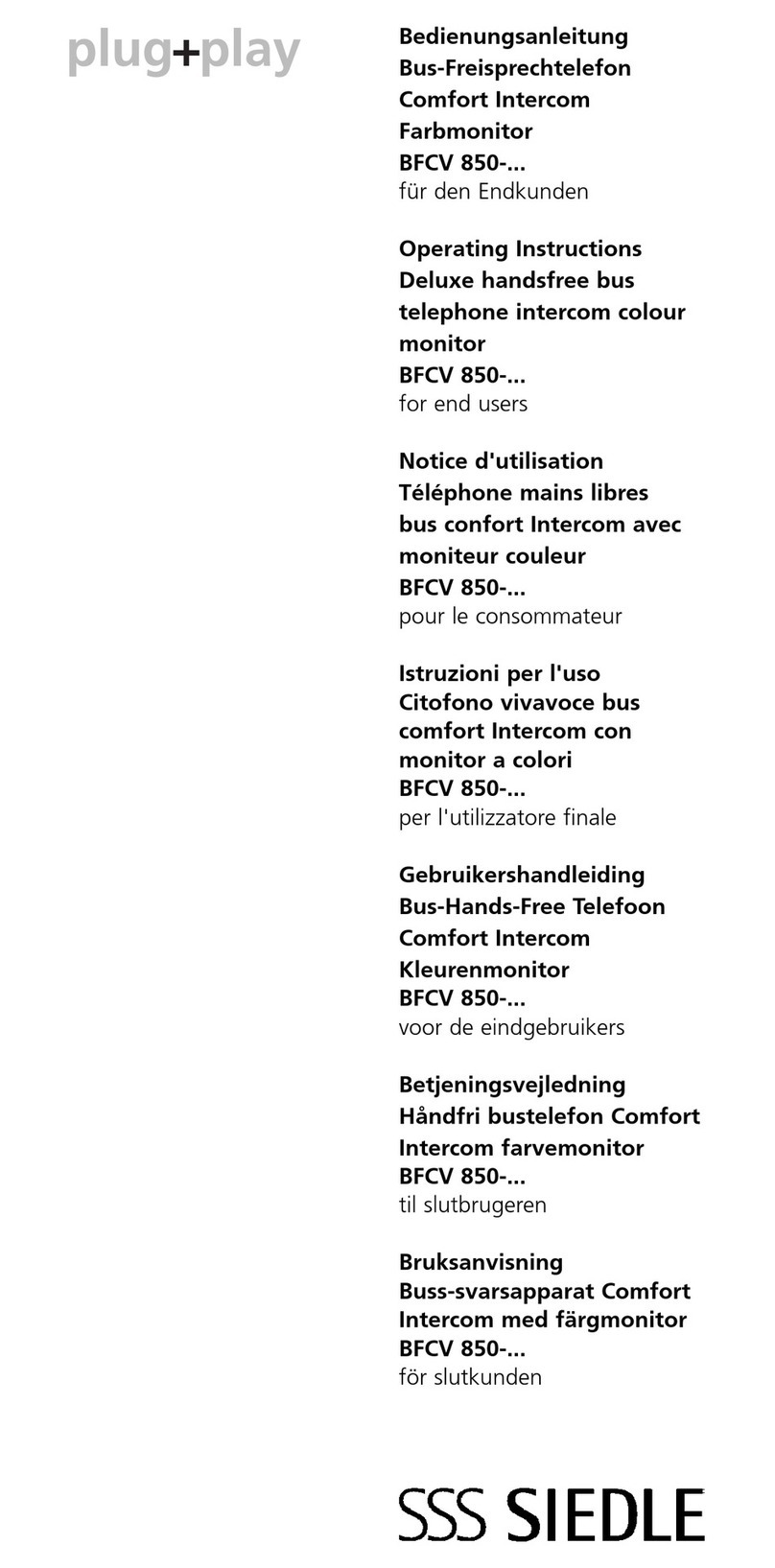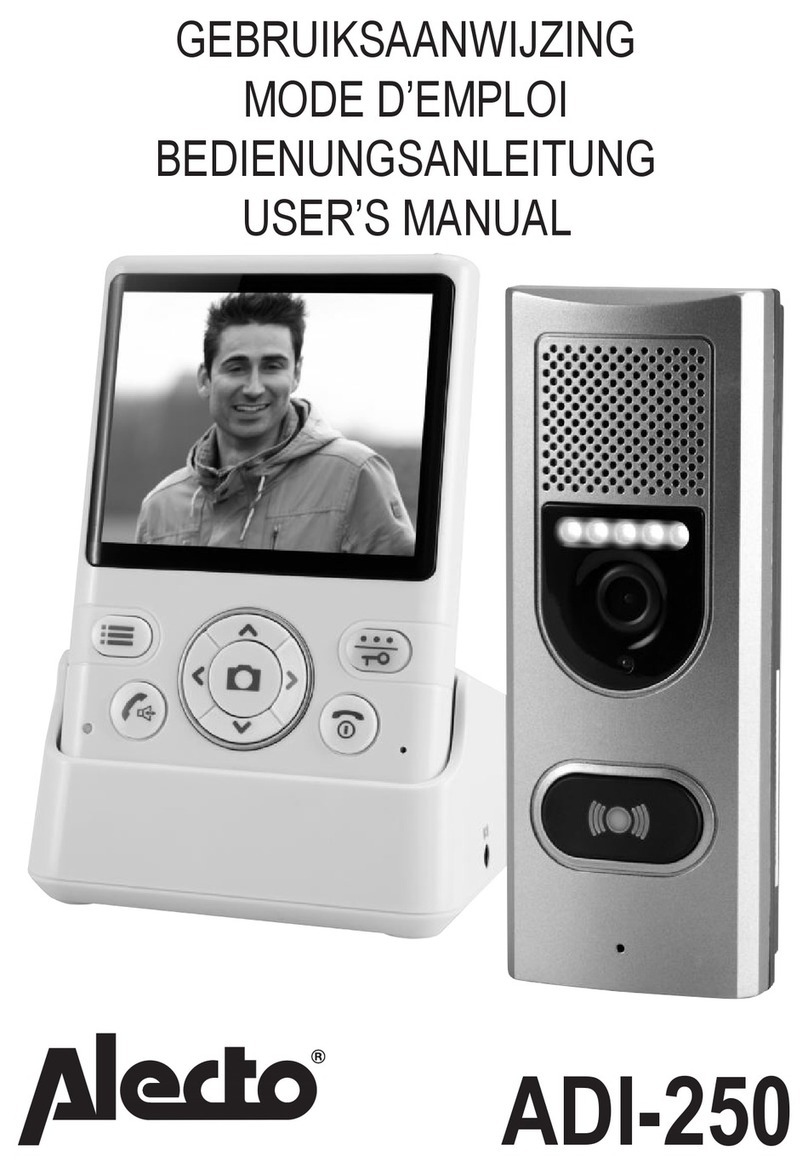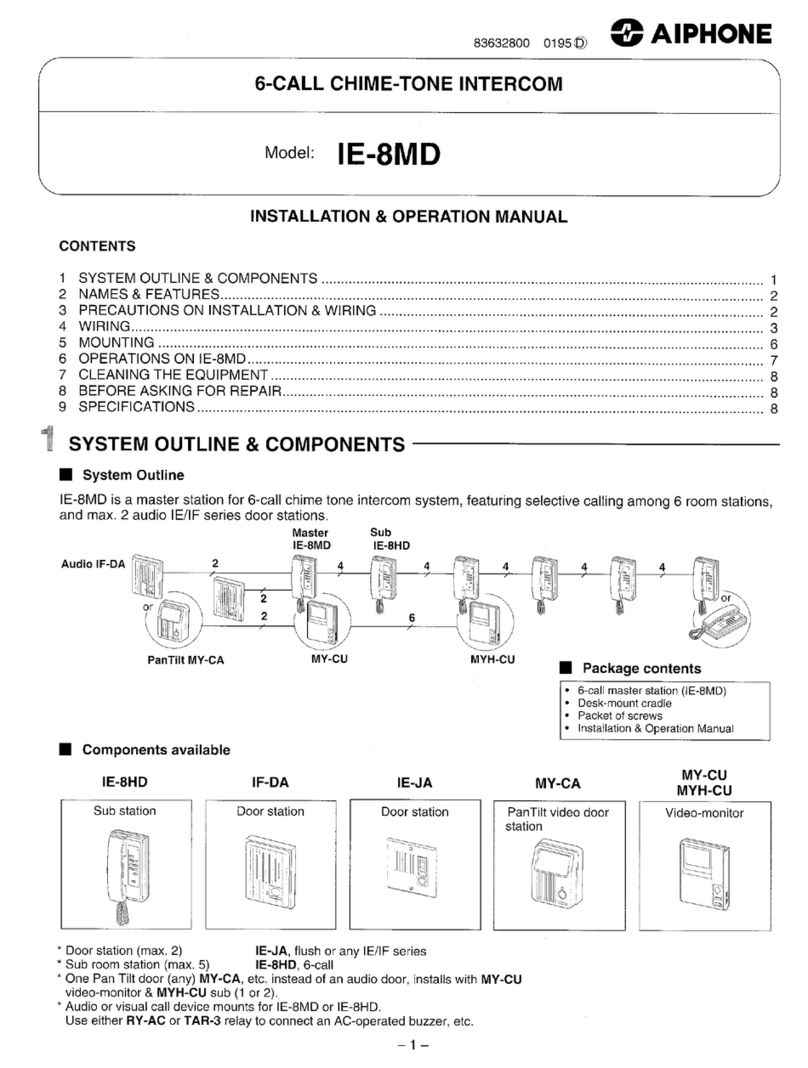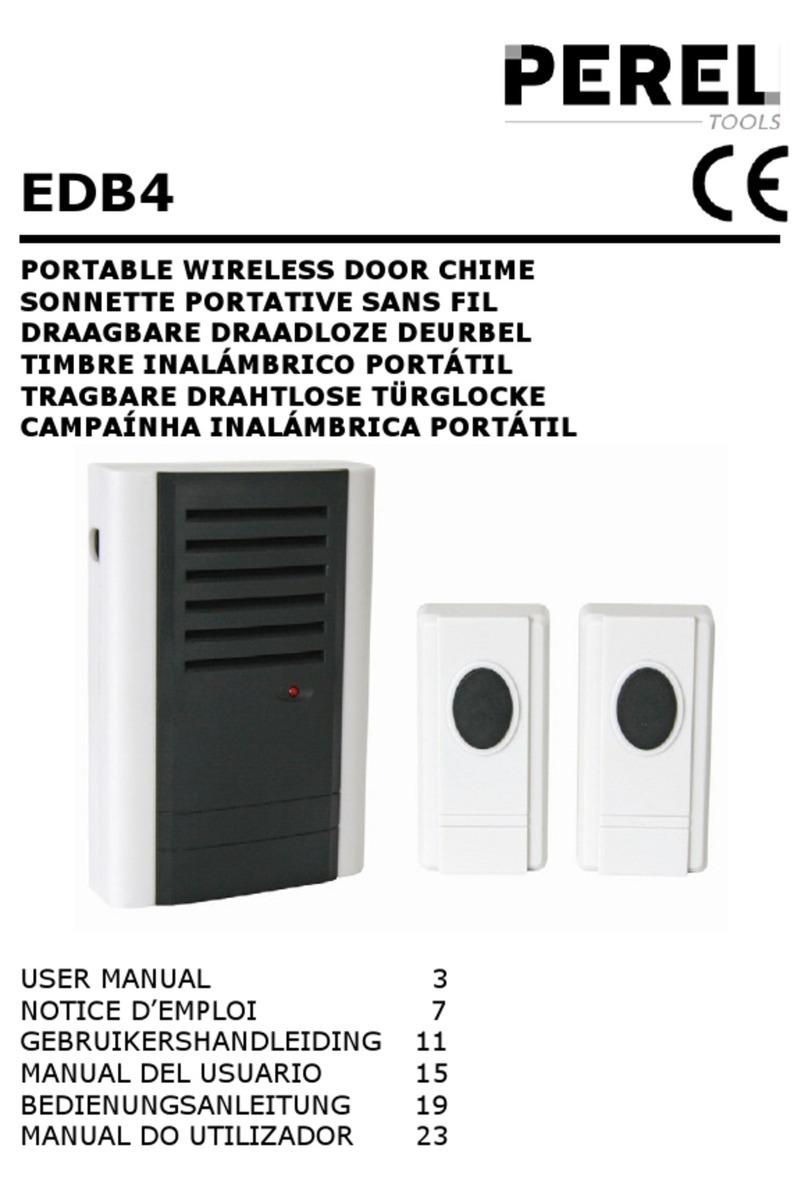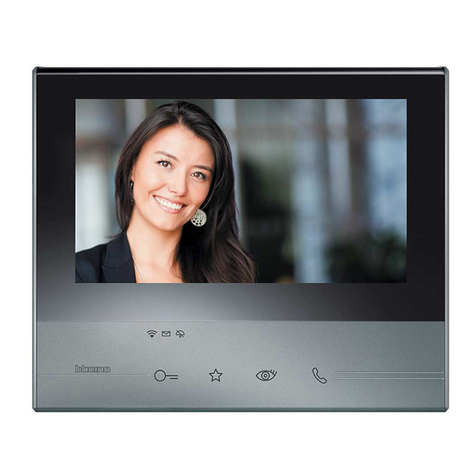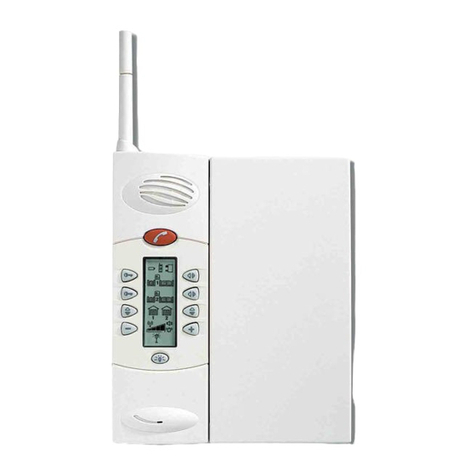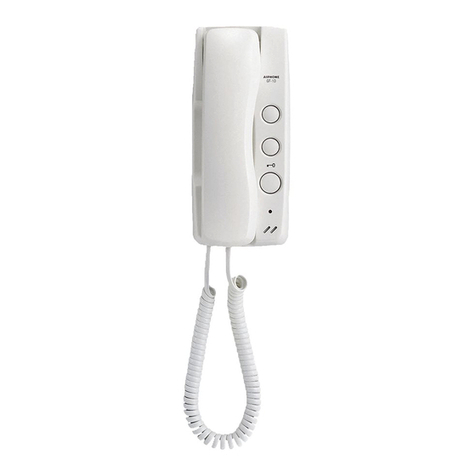
VARIANTE-VERSION-SONDERSCHALTUNG-VARIACIÓN 1
Collegamento pulsante chiamata
fuoriporta su citofoni o monitor
muniti di decodica interna.
Collegando nell’impianto il mo-
dulo generatore di chiamata Art.
0002/831.06 e un trasformatore Art.
M832 azionando il pulsante fuori-
porta il citofono e/o il monitor suona
con timbro differente da quello ot-
tenuto con la chiamata dalla targa
esterna.
N.B.: Il ripetitore di chiamata è utiliz-
zato per la sola chiamata fuoriporta.
Anschluß des Wohnungstür-Klin-
gelknopfes an Haustelefonen oder
Monitoren mit interner Decodie-
rung.
Bei Anschluß des Rufgenerator-
moduls Art. 0002/831.06 und eines
Transformators Art. M832 läutet bei
Betätigung der Klingel an der Woh-
nungstür das Haustelefon und/oder
der Monitor mit anderem Klang als
beim Ruf von der Außenstelle.
N.B.: Der Rufwiederholer wird nur
für den Ruf von der Wohnungstür
benutzt.
Door call button connection for in-
terphones/monitors with internal
decoding.
If you connect call generating mod-
ule Art. 0002/831.06 and transformer
Art. M832 to the system, and press
the door push-button, the entry
phone and/or monitor will have a
ringing sound different from the
sound obtained by means of the en-
trance panel.
Raccordement poussoir appel
hors porte sur postes ou moni-
teurs équipés du décodage in-
terne.
Si l’on connecte dans l’installation
le module générateur d’appel Art.
0002/831.06 et un transformateur
Art. M832 et que l’on actionne le
poussoir hors de la porte, le poste et/
ou le moniteur sonne avec un timbre
qui diffère de celui que l’on obtient
avec l’appel à partir de la plaque
externe.
N.B.: Le répétiteur d’appel est utilisé
pour l’appel hors porte seulement.
Conexionado pulsador llamada
puerta apartamiento en interfonos
o monitores provistos de codifica-
ción interna.
Conectando en la instalación el
módulo generador de llamada Art.
0002/831.06 y un transformador Art.
M832, accionando el pulsador puerta
apartamiento el repetidor de llamada
del interfono y/o monitor suena con
tonalidad diferente de aquella de lla-
mada de la placa externa.
N.B.: El repetidor de llamada viene
utilizado para la sola llamada desde
la puerta apartamiento.
Ligação do botão de chamada do
patamar em telefones ou monito-
res com descodicador interno.
Ligando, na instalação, o módulo ge-
rador de chamada Art. 0002/831.06
e um transformador Art. M832, ac-
cionando o botão do patamar, o te-
lefone e/ou o monitor toca com um
timbre diferente do obtido com a cha-
mada da botoneira externa.
N.B.:O repetidor de chamada só é
utilizado para a chamada do pata-
mar.
10
6204
